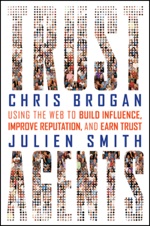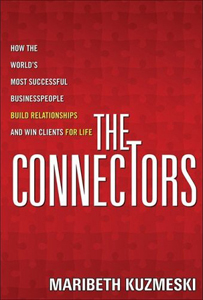 Following is an excerpt from Social Marketing to the Business Customer, which is due to be published in January, 2011 by John B. Wiley & Sons:
Following is an excerpt from Social Marketing to the Business Customer, which is due to be published in January, 2011 by John B. Wiley & Sons:
Online communities are a bit of a paradox. They are both the oldest form of social media and also the newest. Forums and discussion groups date back to the late 1960s and have been a staple of customer support operations at technology companies for 30 years. Internet newsgroups, CompuServe, The Well and other early communities had membership in the hundreds of thousands a decade before anyone had heard of a Web browser.
Those early online outposts looked little like the Facebooks and LinkedIns of today, though. The modern features that have made social networks the fastest-growing consumer phenomenon in history have created all kinds of new use scenarios, including some compelling B2B examples. Communities are the convention centers of social media. They are flexible gathering halls that can fill a wide variety of purposes ranging from product development to lead generation. The key is to get members to want to participate.
Friends and Fame
The great innovation in online communities came in 1998, when Classmates.com introduced the concept of personal profiles and friends. Those metaphors are now a staple of every social network and provide a powerful incentive for participation. Profiles are a member’s personal homepage. Everything the member contributes, from establishing contacts with others to joining groups to posting status updates, is captured in the profile. The more active the member is, the higher his visibility and the greater the value of the network to his personal success.
Friends are a virtual version of their real-world equivalent. When people create friend relationships, they exchange information that is not visible to others and they form persistent connections based upon trust. That’s actually how it works in real life, too. At their simplest level, friends connections are an efficient way to stay in touch. Members can always learn each other’s current address or job situation by searching within the network. In B2B communities, personal profiles are a way to register areas of expertise that others may find useful. Activity
is also a validation point. It’s one thing for someone to say he is an expert in direct marketing, but it’s more powerful when he can to prove it by solving the problems of other direct marketers. That proof is stored in the person’s profile.
Online friendships also translate fluidly into real-world connections. “Community isn’t just about discussing products but about getting to know each other and making friendships,” says Nicholas Tolstoshev, a Spiceworks community manager. Online friends in B2B communities frequently arrange meet ups at trade shows and events. Successful community managers we spoke to invariably augmented their online worlds with physical events to meet and thank their most active members.
Prior to the introduction of personal profiles, it was difficult for participants in online networks to build visibility. Recent experience has shown that visibility is the single most powerful driver of participation. Many communities use a recognition system that ties a member’s status to contributions. A few, like SAP, celebrate their most active members at physical events.
Spiceworks awards points to members who post well-regarded answers to other members’ questions. Valued members of the community are invited to participate in conference calls with Spiceworks developers. Their contributions are rewarded with low-cost swag like T-shirts but more importantly with inside information. Community managers also publish occasional interviews with featured members, highlighting their contributions and career accomplishments. “Online status drives a huge amount of activity without our sending money out the door,” says Tolstoshev.
other members’ questions. Valued members of the community are invited to participate in conference calls with Spiceworks developers. Their contributions are rewarded with low-cost swag like T-shirts but more importantly with inside information. Community managers also publish occasional interviews with featured members, highlighting their contributions and career accomplishments. “Online status drives a huge amount of activity without our sending money out the door,” says Tolstoshev.
FohBoh.com, a social network for food service professionals, highlights new contributions by its members on its home page and invites others to congratulate them on their celebrity. TopCoder, a contract software developer that hosts programming competitions and licenses the best solutions to commercial customers, applies an elaborate algorithm to the code submitted by its members to compute the quality of their work. Leader boards are maintained for the major competitions and quality ratings are reflected back to individual profiles. Top coders win money and also visibility that leads to jobs and lucrative contracts.
The most prolific contributor to LinkedIn’s “Answers” forum is Dave Maskin, a New York-based event marketing specialist who has answered an incredible 25,000 questions. Maskin refers to himself as “Mr. Lead Generator,” indicating that the value he provides to the community is good for his business.









 In
In 
